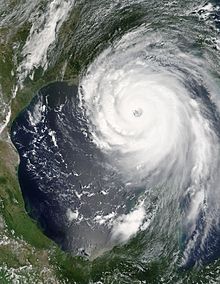
By Jason Alderman
Natural disasters are inevitable, unpreventable and often come without warning. No part of the world seems to be spared, whether it’s a hurricane, earthquake, tornado, drought or flood. Even though such catastrophes can’t always be predicted, their likely aftermaths often can, including property loss, power or water service disruption, scarcity of food and supplies or overtaxed relief organizations.
Superstorm Sandy was a powerful reminder of why it’s vital to develop a family disaster plan. By planning ahead and knowing what you might need under dire circumstances, you can save yourselves a lot of time, money and grief.
The Federal Emergency Management Agency (FEMA) offers great suggestions for developing a family emergency plan, building an emergency supply kit, and learning what to do before, during and after emergencies – even a plan for family pets (www.fema.gov).
Once your physical safety has been assured, you’ll inevitably need to access important financial and legal records, whether to file insurance claims, apply for loans or simply withdraw cash. Taking these few steps now will make accessing such information much easier when the time comes:
Create a log of all account numbers, toll-free emergency numbers, contact information and passwords for your bank and credit card accounts, loans, insurance policies, utilities and other important accounts. Update it regularly and save copies in secure, offsite locations such as a safety deposit box or with a trusted friend living in another area. You can also email the list to yourself in an encrypted, password-protected file, save it on a CD or USB drive, or use a cloud-based storage service like Dropbox that will let you access it from any Internet connection.
Make PDF copies of tax returns, insurance policies and legal documents and save offsite in the same manner as above, in case your files or computer are destroyed by fire or flood. Also make digital copies of invaluable family photos, documents and memorabilia that money can’t replace.
Document your possessions. If you should ever need to file an insurance claim or claim a tax deduction for lost, stolen or damaged property, it’ll be much easier if you have an inventory of everything you own – photos or videotape are even better. A few available tools:
- The IRS’ Casualty, Theft and Loss Workbook (IRS Publication 584) includes a worksheet for cataloging and estimating the value of your possessions.
- The Insurance Information Institute maintains a free, secure online home inventory software application that lets you access your home inventory, anywhere, anytime (www.iii.org).
- Your insurance company’s website likely contains a downloadable inventory form.
Make sure you fully understand what is and isn’t covered by your insurance policies for natural disasters. You may need additional coverage for damage associated with hurricanes, tornados, earthquakes and other weather conditions. Also:
- Document any damage with photos or video before you start cleanup or repairs.
- Keep track of expenses you incur to prevent further damage, for temporary housing or to move your possessions for safekeeping, as they may be reimbursable under your insurance claim.
- Don’t delay submitting your claim, since insurers often settle claims in the order filed.
FEMA provides information on how you might be able to get government assistance before, during and after a disaster at www.disasterassistance.gov.
Bottom line: Develop a family emergency plan now and make sure everyone knows what to do when disaster strikes.
Jason Alderman directs Visa’s financial education programs. To Follow Jason Alderman on Twitter: www.twitter.com/PracticalMoney.




